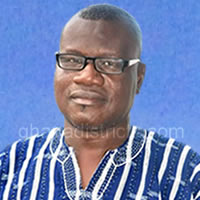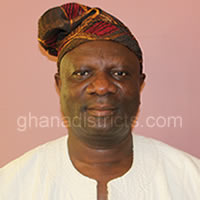The Nanumba North District Directorate of Education is one of the decentralized departments under the District Assembly. The Directorate is headed by a substantive Director of Education and assisted by four frontline Assistant Directors who head four (4) units. These are Finance and Administration, Planning and Research, Human Resource Management and Development and Monitoring and Supervision.
Each unit is headed by an Assistant Director who reports regularly to the District Director. Officers of the rank of Principal Superintendent or above assist these Assistant Directors in the execution of their duties. These officers are in turn assisted by junior officers. There are also desk officers in charge of Guidance and Counseling, School Health Education Programme (SHEP), Girl-child Education, District Headteachers Adviser, Ghanaian Language and Culture, workers’ Welfare and Pre-schools.
Objectives
The objectives of the Education Directorate in providing education for the district are in tune with the broad objectives of the Ministry of Education, mainly:
- To improve access and participation
- To improve the quality of teaching and learning
- To improve efficiency and effectiveness of management performance
- To strengthen capacity at the District level to promote decentralization
Distribution and Location of Schools
The district has a distribution pattern of schools and their location. It has a total of 106 educational institutions at the pre-tertiary level made up of 18 pre-schools (17 public), 76 primary schools (75 public), 12 public JSS, 1 Senior Secondary School and 1 Teacher Training College.
With this distribution pattern it is obvious that Bimbilla Central Circuit tops the list of public schools with a total of 25 public schools. The primary schools in the district are fairly distributed to benefit the various communities. Of the Twelve (12) JSS in the District Four (4) are located in Bimbilla Township because of its numerous feeding primary schools. Plans are afoot to open Two (2) more JSS at Lepusi and Sogon No.1.
Two private primary schools and a kindergarten were established in Bimbilla Central Circuit. The one established in town by the Presbyterian Church of Ghana has since been absorbed into the public system. Plans are far advanced to absorb the other.
The District has 1 Senior Secondary School located in Bimbilla Township. The only Teacher Training College in the district is in Bimbilla in the Bimbilla Central Circuit.
Average Distence to School
Majority of pupils in the district cover a walking distance of between 1.5km and 4km to school daily. The average distance is 2.5km. However, in some circuits such as Makayili, Dakpam, Bincheratanga, Chamba and Bakpaba pupils cover more than 2.5km. About 80% of pupils walk to school with 15% riding bicycles and only 5% get to school by other means. Pupils who walk spend considerable time before getting to school. They spend between 50 to 70 minutes before getting to school, while those using bicycles spend between 30 to 60 minutes. This phenomenon presupposes that part of instructional time is expended even before pupils get to school. It also touches on the pupil/teacher Ratio within the period. The figures. show that the national or global target of 1:35 for each class was never achieved during the period under review. This trend calls for the posting of more teachers to the district to offset the short fall.
Primary enrollment for boys and girls has been on the ascendancy from 2002 – 2006. The hitherto wide enrollment gap between boys and girls is narrowed drastically as a result of various interventions that have been put in place by government and other supporting agencies like CRS, World Food Programme, SHEP and the introduction of the capitation grant. These interventions have indeed witnessed a spiral increase in girl-child enrollment. The situation is the same for the JSS where the completion rate for girls has improved tremendously.
The situation of trained teachers is rather lamentable. The district has never achieved targets set for trained teachers to man the various categories of schools. The District Assembly is only able to get a few teachers for sponsorship into Training Colleges. Enrolment figures for the colleges are small because students admitted are few and are further screened to eliminate weak ones. Those who complete are few and cannot cater adequately for the ever increasing school population.
Untrained teachers are engaged to fill existing vacancies in schools but not many of them can be employed because of the ban on employment. Perhaps the National Youth Employment Programme will help offset teacher shortfalls in our schools if the numbers employed is meaningful.
It is significant to mention that boys Enrolment Rate target was 75% in 2006 but 82% was achieved. The target for girls was 71% but 80% was achieved. Overall GES target for JSS was 60% but 65% was achieved. This success story of how this spiral enrolment figures were achieved can be traced to how gender, HIV/AIDS, environmental and ethnic harmony are mainstreamed into the school system. Equal opportunities are created for the sexes in school with special incentive packages like food rations given to girls based on their attendance at school.
The tribal conflict we witnessed in 1981 and 1994 created environmental and ethnic problems with the result that some schools in the troubled zone were closed down. Today, in the district all such schools have been revived and vigorous teaching and learning is taking place there. All ethnic barriers have been removed as conflict prevention and resolution measures are being adopted. The bitter past is gradually being forgotten.
HIV/AIDS issues have been incorporated into the school curriculum and HIV/AIDS messages extended to the nooks and cranny of every community. The concept seems to be catching up with the people as everybody is well sensitized on the dangers of the pandemic. Life expectancy is likely to improve if the campaign is sustained and so we can have many more children in school. Educational harmony in the district lies in the supply of teachers and provision of teaching and learning materials.
Performance In BECE 2005/2006
Performance of pupils in the Basic Education Certificate of Education Examination (BECE) for 2005/2006 academic year was quite high. Pupils from both town and rural schools performed well in all subjects. The results were also better them if was in 2004/2005. A total of 436 pupils have had placements in Secondary Schools throughout the country. This is a marked improvement in placement over last year’s
The Way Forward in Education in The District
- Scholarship schemes awarded by the World Food Programme and other organizations should be increased to cover the sexes.
- Capitation Grant to be more effectively monitored by educational authorities.
- More stringent policies should be evolved by the District Assembly to improve enrollment in schools.
- District Assembly to sponsor more teachers at the Training Colleges in order to absorb them into the district. Training Colleges should increase their current intake.
- More untrained teachers should be employed to offset deficit of teachers in the district.
- District Assembly, GOG and NGOs to build more structures for underserved schools.
- A model JSS should be built in Bimbilla town to reduce the pressure on existing schools.
- A girls’ JSS should be built in Bimbilla town to give more impetus to Girl-child education.
- A vocational school for the disabled should be built in the district.
- Approved funds for education in the district should be regular and timely.
- Bicycle support packages should be instituted for pupils walking long distances to school.
- The Ghana Education Service, District Assembly and philanthropic organizations should support the seven circuit supervisors with seven (7) motorbikes for effective monitoring and supervision.
- The current twelve (12) JSS in the district are inadequate considering the spiral pupil population increase. Four more JSS should be built.
- A District Library should be built in Bimbilla town.
- The current weak Nissan pickup being used by the District Director should be replaced by a new one. As an interim emergency measure it should be completely overhauled.
- Consequent the elevation of Bimbilla Secondary School to boarding status, existing infrastructure like dormitories, kitchen and Assembly Hall should be improved and expanded.
Date Created : 11/18/2017 7:08:31 AM





 facebook
facebook twitter
twitter Youtube
Youtube TOLL FREE 0800 430 430
TOLL FREE 0800 430 430 +233 593 831 280
+233 593 831 280 GPS: GE-231-4383
GPS: GE-231-4383 info@ghanadistricts.com
info@ghanadistricts.com Box GP1044, Accra, Ghana
Box GP1044, Accra, Ghana